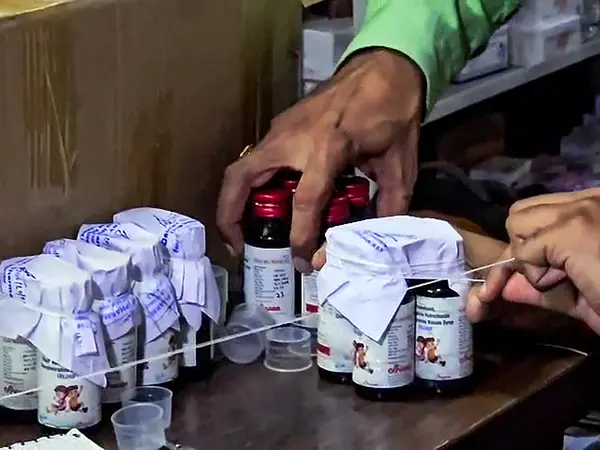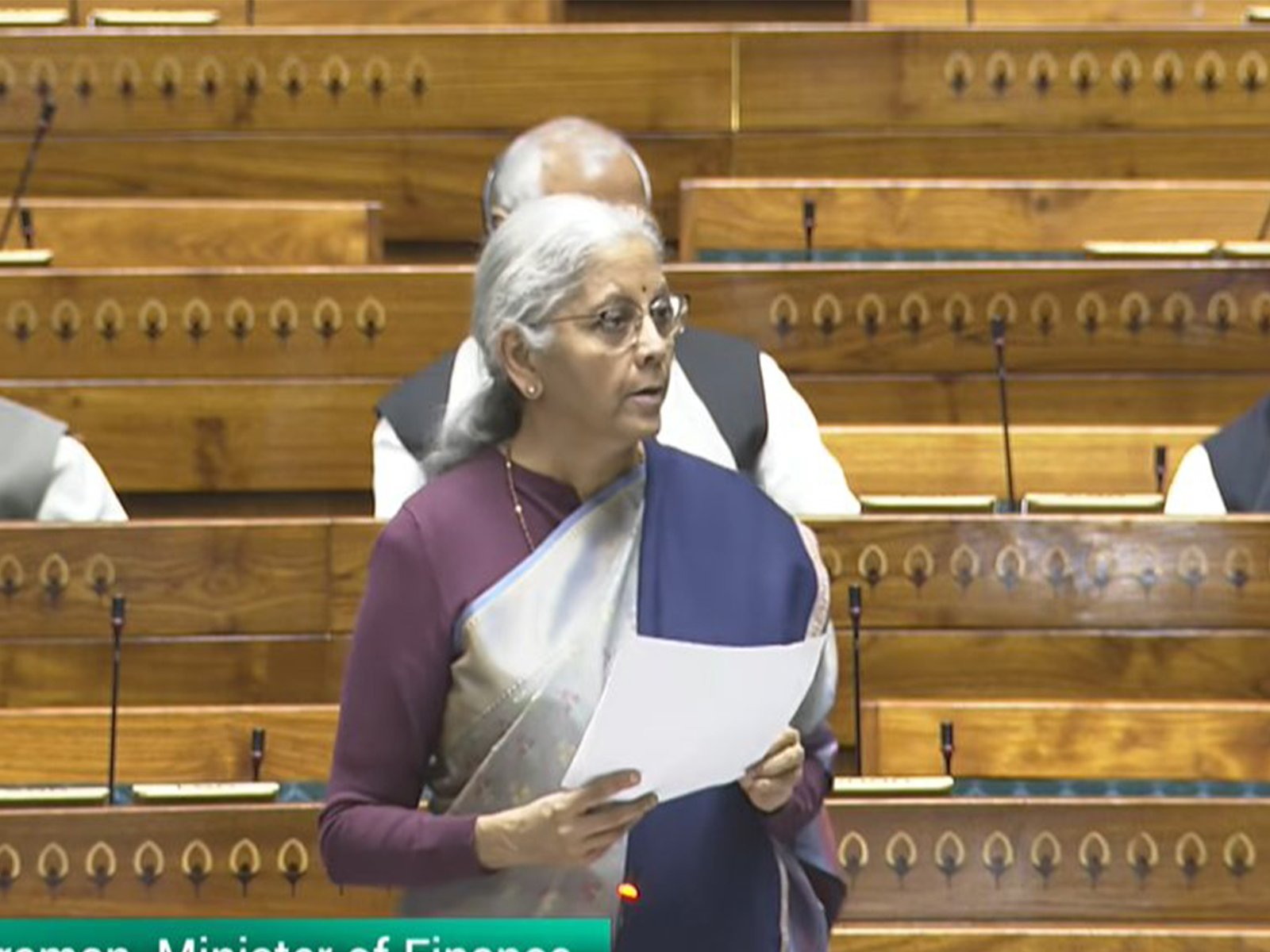Why in the News?
- At least 11 child deaths in Madhya Pradesh and 3 in Rajasthan have been linked to the consumption of Coldrif cough syrup contaminated with Diethylene Glycol (DEG); a toxic industrial chemical.
- The incident has renewed focus on wide drug safety oversight and regulatory lapses in the pharmaceutical supply chain, especially for paediatric medicines.
Key Highlights
- Nature of the Incident
- The Drug Testing Laboratory, Chennai, found 48.6% Diethylene Glycol in Coldrif samples; a highly poisonous substance injurious to health.
- DEG is a cheap substitute for pharmaceutical-grade solvents like propylene glycol but is toxic to kidneys and the nervous system.
- Several batches of Coldrif were allegedly manufactured without adequate quality checks or testing.
- The contamination led to acute kidney failure and death in multiple children.
- State and Central Government Response
- States including Madhya Pradesh, Rajasthan, and others immediately banned Coldrif and related formulations.
- The Rajasthan government banned all syrups containing dextromethorphan after three child deaths were linked to such products.
- The Central Drugs Standard Control Organisation (CDSCO) has begun probe and coordination with state drug controllers to track the source of contamination.
- A wider recall of suspect cough syrups is underway; local chemists were instructed to remove unlabelled and untested syrups.
- Understanding Cough Syrups and Their Safe Use
- Two broad types exist:
- Cough Suppressants (e.g., Dextromethorphan Hydrobromide) act on the brain to block the cough reflex; used for dry coughs.
- Decongestants (e.g., Phenylephrine, Pheniramine) reduce nasal congestion and discharge; used for wet coughs.
- Children under 4 years should not be given cough syrups except under a paediatrician’s strict supervision.
- Parents often misuse over-the-counter syrups without prescription — increasing the risk of overdosing and exposure to substandard formulations.
- Two broad types exist:
- Medical Risks and Overdose Effects
- Overdose symptoms: drowsiness, sedation, increased heart rate, vomiting, and nausea.
- In adolescents, high doses can cause addiction or “drug highs” due to the psychoactive effect of dextromethorphan.
- Only paediatricians can prescribe correct dosages — typically 5 to 1 mg/kg of body weight, up to three doses daily.
- Parents must use the dosing spoon provided with the bottle; using household spoons can cause accidental overdosing.
- Preventing Contamination and Safe Alternatives
- Pharmaceutical-grade solvents (like propylene glycol) must be used — not cheaper industrial substitutes such as DEG.
- Parents should buy labeled syrups from reputed companies only, not loose or unlabeled formulations.
- Homemade and safe remedies for cough relief:
- Steam inhalation and humidified air.
- Saline nasal drops for congestion (drug-free).
- Warm fluids and rest for minor viral infections.
- For infants (<2 years), no pharmaceutical cough syrup is recommended, only symptomatic relief through simple remedies.
Key Terms
- Central Drugs Standard Control Organisation (CDSCO)
- India’s national drug regulatory authority under the Ministry of Health and Family Welfare.
- Headed by the Drugs Controller General of India (DCGI).
- Responsible for new drug approval, import licensing, and pharmacovigilance.
- Coordinates with state drug controllers to maintain uniform standards.
- Over-the-Counter (OTC) Drugs
- Medicines sold directly to consumers without a prescription.
- In India, these include common cough/cold syrups, painkillers, and antacids.
- Unregulated OTC sales often lead to misuse, resistance, or poisoning.
- Requires strict monitoring and consumer education to prevent misuse in children.
- Schedule H and H1 Drugs (Drugs and Cosmetics Rules, 1945)
- Lists of drugs that must be sold only with a registered medical practitioner’s prescription.
- Schedule H1 introduced in 2014 to control antibiotics and psychotropic drugs.
- Violations attract fines and imprisonment.
- Inclusion of paediatric syrups under these schedules could prevent misuse.
Challenges and Way Forward
| Challenge | Way Forward |
| 1. Weak drug quality control and fragmented enforcement | Strengthen CDSCO’s coordination with state drug controllers; implement real-time digital batch tracking for all pediatric formulations. |
| 2. Unregulated over-the-counter (OTC) sale of medicines | Enforce Schedule H1 norms strictly; make pediatric syrups “prescription-only” with penalties for illegal OTC sales. |
| 3. Use of toxic industrial solvents (like DEG) | Mandate third-party testing of excipients (solvents) and random audits of small-scale manufacturers. |
| 4. Lack of consumer awareness and medical supervision | Conduct mass public-health campaigns on safe paediatric medication and the risks of self-medication. |
| 5. Inadequate pharmacovigilance and recall mechanisms | Develop a nationwide Adverse Drug Reaction (ADR) database, accessible to doctors, pharmacies, and citizens; institutionalise a swift national recall protocol. |
Conclusion
The Coldrif cough syrup tragedy once again exposes systemic weaknesses in India’s drug quality regulation and enforcement mechanisms. While the chemical Diethylene Glycol is well-known for its toxicity, poor oversight and unchecked OTC sales allowed contaminated drugs to reach children. Ensuring drug safety requires an integrated approach — stronger regulatory institutions, scientific vigilance, public education, and strict manufacturer accountability. Protecting children’s health must remain the foremost public health priority.
| EnsureIAS Mains Question Q. The recent deaths linked to contaminated cough syrups in India highlight systemic weaknesses in the regulation of pharmaceuticals. Discuss the challenges in ensuring drug safety and the measures needed to strengthen India’s drug regulatory framework. (250 Words) |
| EnsureIAS Prelims Question Q. With reference to Diethylene Glycol (DEG), consider the following statements: 1. It is used as a solvent in some pharmaceutical formulations. 2. It is considered safe for human consumption in small quantities. 3. It can cause kidney and liver failure when ingested. 4. It is chemically related to propylene glycol, which is a safe pharmaceutical solvent. Which of the statements given above are correct? A. 1 and 3 only Answer: C. 1, 3 and 4 only Explanation: Statement 1 is Correct: Diethylene glycol (DEG) is sometimes wrongly used as a cheap substitute for propylene glycol, a common solvent. Statement 2 is Incorrect: DEG is toxic even in small quantities; it is not safe for human consumption. Statement 3 is Correct: DEG causes acute kidney failure and metabolic acidosis, often leading to death. Statement 4 is Correct: It is chemically similar to propylene glycol, but unlike propylene glycol, it is poisonous and not approved for use in medicines. |
Also Read | |
| UPSC Foundation Course | UPSC Daily Current Affairs |
| UPSC Monthly Magazine | CSAT Foundation Course |
| Free MCQs for UPSC Prelims | UPSC Test Series |
| ENSURE IAS NOTES | Our Booklist |





